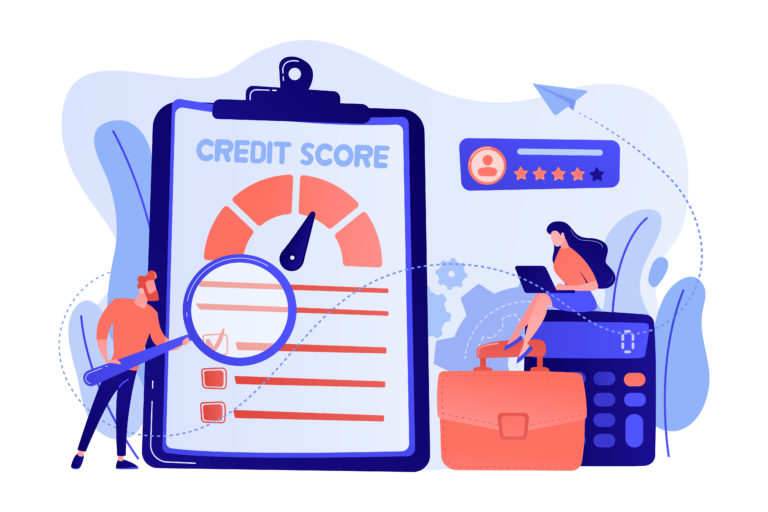Credit risk workflows take up a substantial amount of time and effort for banks. In addition, their ability to assess the credit risk of a loan portfolio is based on their ability to examine individual borrowers’ risks and their intuitive knowledge of default risks. To address growing regulatory limitations, investor expectations, and innovative competition, creditors must focus on automating their credit risk workflow processes.
The credit risk workflow automation impact
Before online banking was mainstream, borrowers who depended on traditional banks for lines of credit had to endure a lengthy and time-consuming credit assessment process. However, automating credit risk workflows allows lenders to focus on more viable applications while also helping them to price risk more precisely.
Credit underwriting has had to evolve to align with contemporary customer expectations. Today, lenders who still employ a six-week evaluation process will frighten away borrowers. In the finance sector, automation benefits both customers and creditors.
Apart from customer service and credit risk, managing a large volume of credit requests (credit applications and requests for credit limit increase from existing customers) may be expensive. To meet growing credit demand in the past, organizations would typically increase their employees or decrease their credit risk evaluation standards. Even with larger teams, underlying manual processes create limits on capacity, transparency, collaboration, and accuracy.
Also, as the number of credit requests grows, so does the quality of service decline simultaneously increasing the potential for default. Yet, thanks to automation, businesses can process large quantities of credit requests without propagating credit risk or service quality and without increasing staffing expenses.
Typically, credit requests are divided into two categories: Low and high. Usually, consumers will ask for $1,000 to $20,000 in credit for low-cost products. Receiving and processing low credit requests can take time, and mistakes are part and parcel. Yet, these are the most common requests. Thus, large batches of the “low” category credit requests are contributing to an overall increase in credit risk.
How does automation create value?
Financial institutions can achieve immediate benefits while also developing a crucial competence by applying machine learning into their attempts to automate credit risk workflow. You can use machine learning in a wide range of situations, including early-warning systems (EWS). It also enables the possibility of deriving more insightful conclusions from large, complicated data sets without being limited by standard statistical analyses’ constraints. Below, we have listed other ways automation creates value for credit risk workflow:
Underwriting. Thanks to automation, a financial institution can manage all of its credit granting, document creation, and approval with more personalization while still following business regulations. Further, automated underwriting incorporates all loan-risk factors connected with lending rules, even those that might be ignored when executing a traditional loan decision.
Scalability. Scalability is difficult to achieve in a traditional underwriting process since it requires a deep understanding of the lending sector to comprehend the vast range of documents necessary to enhance analysis, stacking, categorization, and extraction. A single system may handle the entire process. Instead of evaluating individual cases, analysts can concentrate on value-added activities.
Detecting fraud. While credit card fraud is a multibillion-dollar business in and of itself, it represents a much more significant percentage of the global economy. Fraud is considerably and consistently reduced when processes are automated. How? Automating the right workflows can ensure detection of risks associated with delivering a loan to a consumer immediately using predictive analytics.
Regulatory compliance. The most rewarding aspect of automation is altering a rule and having it implemented consistently based on the criteria you provide. Hence, improved compliance is achieved by automating error-prone processes that can also produce and save an audit trail.
Use automation to do more with less
Financial organizations that automate their credit risk process and convert to machine learning-based credit risk workflow techniques can gain a competitive advantage. How? Consider these suggestions:
- Keep track of the data your model uses, your strategies, and how well the models performed.
- Identify your model’s decision-making process — and the impact it has on your business: Is there a connection between the model and sales revenue? Will the outcome alter your credit risk workflows? Is there a difference in the rate of approval or default? What’s next? Well, now you can examine and categorize your answers.
- Determine prerequisites and assumptions for regulatory compliance early on in the process. The model must explain to potential borrowers all factors that affect its scores.
- Track your model’s progress to see whether it may help you avoid the next major economic shock and remain afloat while others sink.
What types of automation solutions are available for managing credit risk workflows?
These are the most commonly-deployed solutions for automating workflows:
- General process automation. To automate various types of activities, process automation systems typically interact with a wide range of platforms.
- Cognitive and robotic process automation solutions. They derive flexibility from their capacity to scrape data from screens and mimic human user interfaces. This makes automating older programs with a user interface but no API a lot easier.
- Low-code application platforms. Non-technical team members can readily automate current systems using low-code application platforms. Further, these technologies are flexible, allowing them to be used to create apps and simplify processes in any industry. Because RPA systems are more challenging to operate, they may be better suited to automating processes and activities with systems that already have APIs. Read more about our low-code workflow solutions for banking.
Lenders can better assess credit risk by automating credit risk workflows, which allows them to reject high-risk customers while also receiving a more accurate and up-to-date picture of their financial condition. Therefore, they can price loans appropriately.





